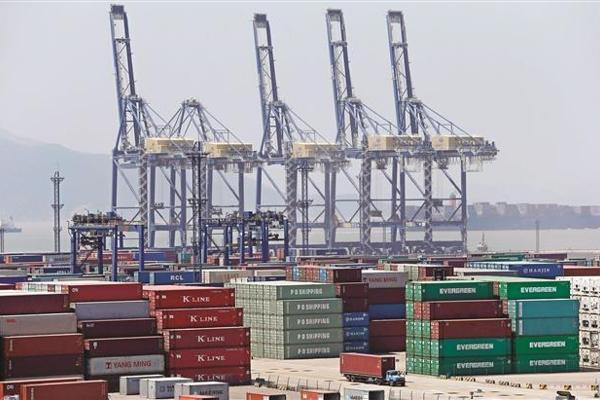Shipping sector posts signs of recovery but far from glory
LONDON - Agence France-Presse


The Baltic Dry Index (BDI), the benchmark for freight rates of bulk carriers, jumped to an 18-month high in July. REUTERS photo
The cost of shipping raw materials is surging but amid slowing Chinese economic growth and other global strains, the market remains well below its historical peak reached just before the financial crisis.The Baltic Dry Index (BDI) -- which tracks rates to transport dry commodities such as coal, iron ore and grain across 20 shipping routes -- jumped 68 percent during the first half of the year.
The key barometer had struck an 18-month high at 1,179 points at the beginning of July.
But despite the rally, “2013 has been another challenging year for dry bulk shipowners, with rock-bottom charter rates and record-low (ship) asset values”, maritime brokerage house Banchero Costa said in a recent client report.
“We can now see the light at the end of the tunnel, but it will still take time for the market to balance out.” The BDI is historically a volatile market -- soaring to an all-time record high level of 11,793 points in 2008 amid surging Chinese demand for commodities -- before plunging in the wake of the global financial crisis.
Ships ordered in the boom years but delivered in the downturn created an excess of freight space that in turn caused sharp falls on the BDI.
“The increase in the supply of new ships should slow considerably over the next few years as the current over capacity has reduced any need to” build more, said Thomas Pugh, commodities analyst at the Capital Economics research group.
But demand for transporting raw materials “should increase at a faster pace than it has done for the last few years”, he told Agence France Presse.
“We expect Chinese imports of iron ore to increase this year and exports of coal from the US to continue to grow strongly.
‘Gradual process’
Despite the predicted pickup in demand for iron ore, which is used to make steel, China’s economic growth is forecast to have dropped to 7.5 percent in the second quarter of this year.
The estimate, calculated from an AFP survey of 10 economists ahead of fresh data due today, is a further deceleration from the already slower 7.7 percent growth rate recorded in the first three months of 2013.
Asian powerhouse China is the world’s second biggest economy after the United States, and is therefore a major consumer of most raw materials.
Turning to the outlook for the shipping sector, Pugh added that the BDI barometer was not expected to stage a major recovery any time soon.
“It may be until 2014 before the BDI, regains the 2,000-point level last seen in late 2011,” he told AFP.
Pugh added: “In terms of timing, this is likely to be a gradual process over the next few years, there’s no reason to expect a sharp increase anytime soon.
“Indeed, we expect any recovery this year to be subdued. The recovery in China’s economy is likely to disappoint in the second half of 2013.”
